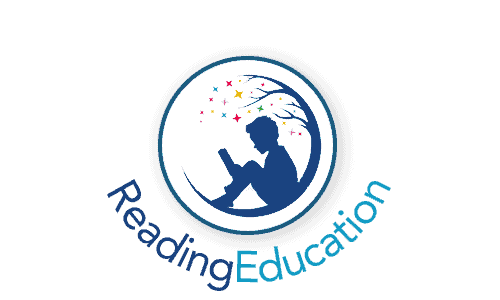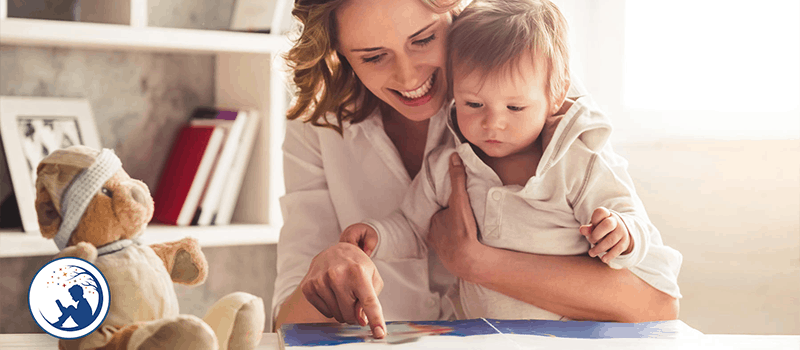Contrary to popular belief, it is possible to teach your baby to ‘read’. The question is, how can you teach an infant who can’t speak and doesn’t know the alphabet to read? On the face of it, it may appear to be an impossible task; however, in reality, it isn’t. There are millions of parents the world over who have successfully taught their baby to read – but how did they do it?
While there are a myriad of ways to teach a child (or adult) to read, teaching babies to read requires something a little different given that they are yet able to speak and don’t have any grasp of the alphabet or English language. It is, therefore, suggested that you use one (or more) of the following three methods:
1) The Flash method.
2) The Multi-sensory method.
3) The Native Reading Method.
In today’s article, we shall explore these three methods and take an in-depth look at how you can employ these techniques to teach your baby to read before they’re even able to speak.
Method #1: The Flash Method
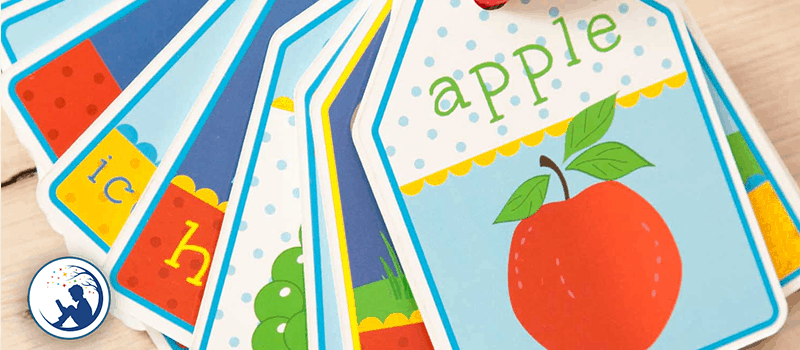
The Flash method was the brainchild (no pun intended!) of Glenn Doman – the founder of the IHAP (Institutes for the Achievement of Human Potential) – all the way back in the 1960s. It was Doman’s belief that the vast majority of human beings never realise their complete genetic potential and for a child to fulfil their potential, they must receive high-quality and frequent stimulation from birth.
How does the Flash method work?
As the name suggests, the Flash method involves the use of flashcards (either purchased or homemade) which are shown to your child in quick succession. Flashing cards at a rate of less than one second per flash is a highly effective way to teach babies for two primary reasons: Firstly, words (or information in general) presented to a person at speed is more easily processed by the brain’s right hemisphere. In contrast to the left side of the brain, right-brain memorisation is unconscious and, therefore, effortless. And secondly, infants, particularly babies, learn new things at an exceptionally fast pace – way faster than adults, so by using a fast-paced method, you keep the child entertained and most importantly, keep them focussed.
How can I use the Flash method to teach my baby how to read?
The Flash method can be used at any point after your baby has reached three months of age. Although there are no specific guidelines that must be adhered to, we highly recommend using the following ‘rules’ around which to base your teaching:
Word Selection
– Begin with words that are familiar to your child, .e. words that are often used in their presence and in their normal, everyday environment. For example: household objects, names of family members, and familiar, everyday language. It will help to boost your infant’s reading skills if you start with words that they recognise.
– In addition to opting for words that are familiar to your child, also select words they will enjoy and find interesting. Shorter words that are alike, such as “map”, “cap”, “tap” etc. are boring. Instead, choose words that are interesting and not easily mistaken for other words; for example, “refrigerator” or “octopus”.
– The logical first step when teaching a baby to read is to focus on short words solely; however, it is essential to include longer, more interesting words as well (such as the ones mentioned above).
Preparing Your Flash Cards
– When first using flashcards, make the words large and red in colour, using an A4 piece of paper for each card and ensuring the word fills up most of the space. In order for your baby to understand written language, it must be big, clear, and repeated.
– To increase the number of words on one card, you must reduce the size of the font. Always do so gradually and monitor how your child reacts to changes in font size/when you add more words to the card. There is no harm going back to single words and larger font sizes if you progress too quickly for your child.
– A change from red to black text can be implemented once your child appears comfortable with the reading process. Black text is far easier on your child’s eye than red when there are more than one or two words on a flashcard.
– Always write the word on the back of the card. As soon as you flash the card to your child, say the word; by writing it on the back of the card, it will eradicate any delays, which is vitally important to the flash method.
– Prepare between 150 and 200 words in advance, with another 150 to 200 in reserve. Babies learn and develop at an exceptionally fast rate; therefore, it is crucial to be fully prepared to progress continually.
– Have different categories of cards organised into separate piles, for example: names, household objects, animals, weather etc.
How To Use Flash Cards
– Flash the cards to your child rapidly; show each card for no more than one second. The rhythm at which young infants learn is much faster than the learning rhythm of an adult.
– When flashing the card, say the word out loud and maintain eye contact with your child. Always use a friendly, lively voice when saying each word.
– Be aware of how your child reacts as the lesson progresses. Look out for any changes in mood.
– Show the flashcards in sets of six, two to three times per day. Consistency and repetition should be your watchwords!
– Always shuffle the words prior to each lesson. Children are exceptionally good at learning sequences; therefore, it is imperative to ensure you’re teaching them to learn the words, not the sequence.
– After around two weeks, replace one card in each category. Two weeks/14 days of repetition is more than enough; any more could lead to boredom or lack of interest. It’s also vital to note that your child doesn’t need to remember every single word – so don’t obsess over them doing so. It’s better for them to learn 30% of 1,000 words than 100% of 50 words.
Lesson Progression
– Begin with single words; this is by far and away the most effective way to introduce new vocabulary.
– When moving to ‘doubles’ (two words), start by using single words that you’ve replaced (as per the above instructions). It’s easier for your child to learn two words that they already know compared to two they do not. Only progress to ‘doubles’ once you’ve used several hundred single words.
– Triples/phrases is the next step in the learning progression. Again, these should be made up of single words that you have replaced, with around five or six per category. For example, in the ‘animals’ section, “The dog plays” / “The cats sits” / The mouse eats” etc. The same applies to sentences, i.e. four words or more.
If your child ever looks bored or disinterested, i.e. he or she is doing anything but focusing on the flashcards, cut the lesson short. The same rule applies if they appear unhappy when you pick up the cards. On good days you can do lots of the flashcards; on bad days, don’t do any at all. Always gauge the mood of your child before beginning any lesson.
Method #2 – Multi-Sensory Method
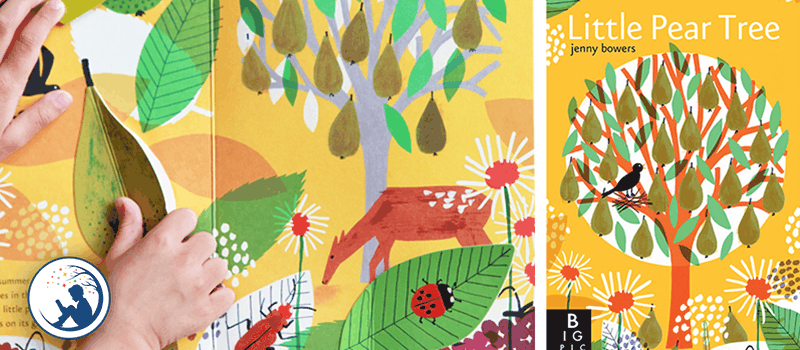
If there’s one man to thank for this highly effective teaching method; it’s Dr Robert Titzer. For many years, infant researcher Titzer studied how young infants learn, using his own daughter, Aleka, as a test subject. By the time Aleka was nine months old, she had learnt to read in excess of 30 words, which inspired Titzer to continue his research, eventually developing and producing a series of books and DVDs entitled ‘Your Baby Can Read’ (often abbreviated as YBCR). The YBCR program utilises both images and videos to illustrate word meanings, encouraging both parents and babies to use their kinaesthetic senses. For example, helping your baby to touch their knees while they look at the word “knees”. Infants taught in this fashion will quickly learn to perform the actions without assistance.
Titzer was of the belief that babies or pre-school children learn much easier and quicker than those in the early years of first school. He many years of research has led to him to conclude that the natural window of opportunity for learning to understand language is from birth up until around four years of age. It’s during these early years that is easiest for an infant to learn sign language, spoken language, the written form of language, or a second language.
How does the Multi-Sensory method work?
As one would expect, the Multi-Sensory method harnesses a plethora mediums to elucidate the meanings of words (and the word themselves) via visual, auditory, and kinaesthetic sensory channels. It is regarded as an exceptionally effective method through which to deliver information because, as humans, we find it easier to remember things that we’ve experienced in a multitude of ways, i.e. through different senses. Just like the Flash Method, this form of teaching also engages the right side of the brain, although in a slightly different way. The right hemisphere of the brain learns through visualisation, feeling, and doing, which is which infants who are right-brain dominant (up until the age of around three) tend to taste and feel every single thing they come across!
Multi-sensory learning occurs on a daily basis when parents interact with their child. For example, something as simple as saying “That’s your mouth!” to a baby, whilst simultaneously touching their mouth, would be classed as multi-sensory teaching. Having both heard the word (“mouth” in this instance) and proceeded to feel their mouth touched, a child will be more likely to remember the meaning of the word. Infants learn body parts at a fare quicker rate when taught this way, which is why the song ‘Head, Shoulders, Knees, and Toes” is so popular. It’s not just a fun song; it’s perfect for multi-sensory learning too!
How can I use the Multi-Sensory method to teach my baby how to read?
Your Baby Can Read products are available to buy from various online stores; the question is, should you buy the program? Here’s our opinion:
Dr Titzer’s Your Baby Can Read teaching method is without a shadow of a doubt a highly effective teaching method; a quick search on Google for reviews of the program illustrates just how successful it is. Therefore, if it’s within your budget, we highly recommend purchasing the program. However, if you’re looking for free resources for teaching the Multi-sensory method, there are alternatives.
For example, the YBCR books utilise flaps which allow the infant to read the word before pulling out the corresponding picture. This can be replicated by making flashcards that can be flipped open. To do this, fold a piece of paper in half (ideally A4 size), write the word on the outside page and stick an image on the inside page. As soon your child has ‘read’ the word, you can flip the card open to reveal the picture inside.
Using a computer, laptop or tablet to provide your child with multi-sensory reading lessons is also an option. This can be achieved by creating or downloading slideshows or flashcard slideshows. Remember, the more senses utilised during your lessons, the more effective and fun it will be for your child! In fact, you can make reading a storybook at a multi-sensory experience by making animal noises, pointing out objects and parts of the body, acting out words etc.
Method #3 – The Native Reading Method
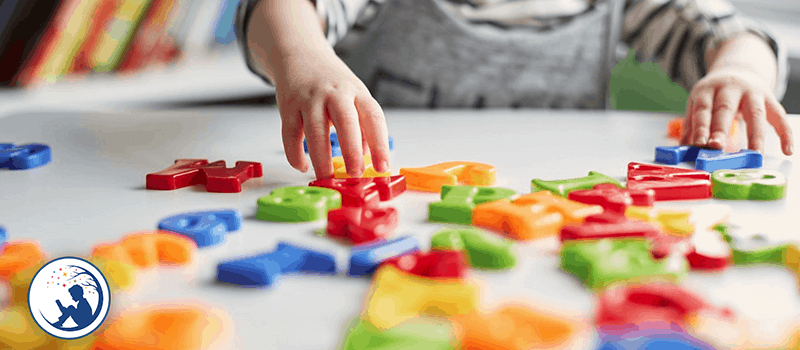
How does the Native Reading method work?
Created by biologist Timothy Kailing, The Native Reading method differs from both the Flash and Multi-Sensory methods in that it doesn’t explicitly teach an infant whole words. The philosophy behind this method is centred around the notion that process of learning to read is something that can occur naturally, with ease and, potentially, subconsciously, provided it is introduced to a child at a young enough age.
From his experiences with his own two children, Kailing suggests that the most natural time for a child to learn to read is between the ages of one and three, reasoning that between 12 and 36 months a child’s brain is naturally most capable of learning two very closely related tasks: learning to understand language/speech and talk. Akin to numerous other proponents of early reading, Kailing is of the opinion that some school-age children struggle to learn to read simply because they started learning too late, and that learning disorders, such as dyslexia, can be avoided through early learning.
How can I use the Native Reading method to teach my baby how to read?
The Native Reading method primarily revolves around the use of letter games; therefore, to use this method to teach your baby to read you will need to invest in a wide array of play letters, words, and images (to provide meanings). We recommend finding big, colourful, and easy changeable ones as this will make it both easier for your child to learn as well as being more fun! Remember to continually name the words and letters throughout the games you play.
Here a few examples of game you can play:
– Singing the alphabet and pointing to each letter as you sing it.
– Building towers from the letter blocks.
– Using floating letters to create words whilst your child is in the bath.
– Using letter magnets to create words on any surfaces that are magnetic, such as the fridge.
– Matching up words with pictures.
– Playing ‘hide and seek’ with letters. Jumble up all of the letters on the floor, then ask them to retrieve several letters for you (three or four at a time).
When playing any of the above games (or any other games of similar vane), try not to correct your child at every opportunity. Words that don’t make any sense and upside-down letters are all part of the natural learning process. Children naturally make mistakes when saying words, and they do exactly the same when spelling words too. Plus, it’s crucial to remember that learning has to be lots of fun. If you spend most of your time correcting your child, they’re unlikely to find it enjoyable and it may adversely affect their confidence.
Aside from word- and letter-based games, you must also read to your infant regularly – ideally every day. When doing so, point to the text as you read (this is a critical component of the Native Reading method). However, there is a right way and wrong way to this. Run your finger underneath the words in a naturally-paced, seamless fashion, not pausing on any long, complicated or interesting words. When done in such a way, the association between the written and spoken forms of the words (and language in general) is something that your child will absorb subconsciously.
Other ideas and suggestions for bringing the Native Reading method into everyday life:
– Label lots of things in and around your house (including people!).
– Pointing from words to pictures or objects,
– Regularly spelling out words, including names.
– Print out music lyrics and follow the words as you sing the song. The rhythm of music can actually help improve memorisation and enhance reading aloud ability.
– Never be afraid of including difficult or confusing words into the letter and word games. If a child encounters complicated words in a completely natural manner, it only helps them to learn these complexities in a completely natural and instinctive way.
The overall goal of the Native Reading method is to create an environment that is brimming full of correlations between written and spoken language. By doing so, you will make the process of learning to read much easier, faster, and more intuitive for your child.
The Complete GuideTo Teaching Your Baby To Read: A Summary
Teaching your baby to read is actually a lot more simple and straightforward than most imagine; however, it is vital that whichever of the above-mentioned method(s) you opt for, you make it is a fun, enjoyable, and interesting as you can! While it is no doubt true that young infants can learn to read instinctively, subconsciously, and with relative ease, they’ll quickly become bored if you’re not making it exciting for them.
